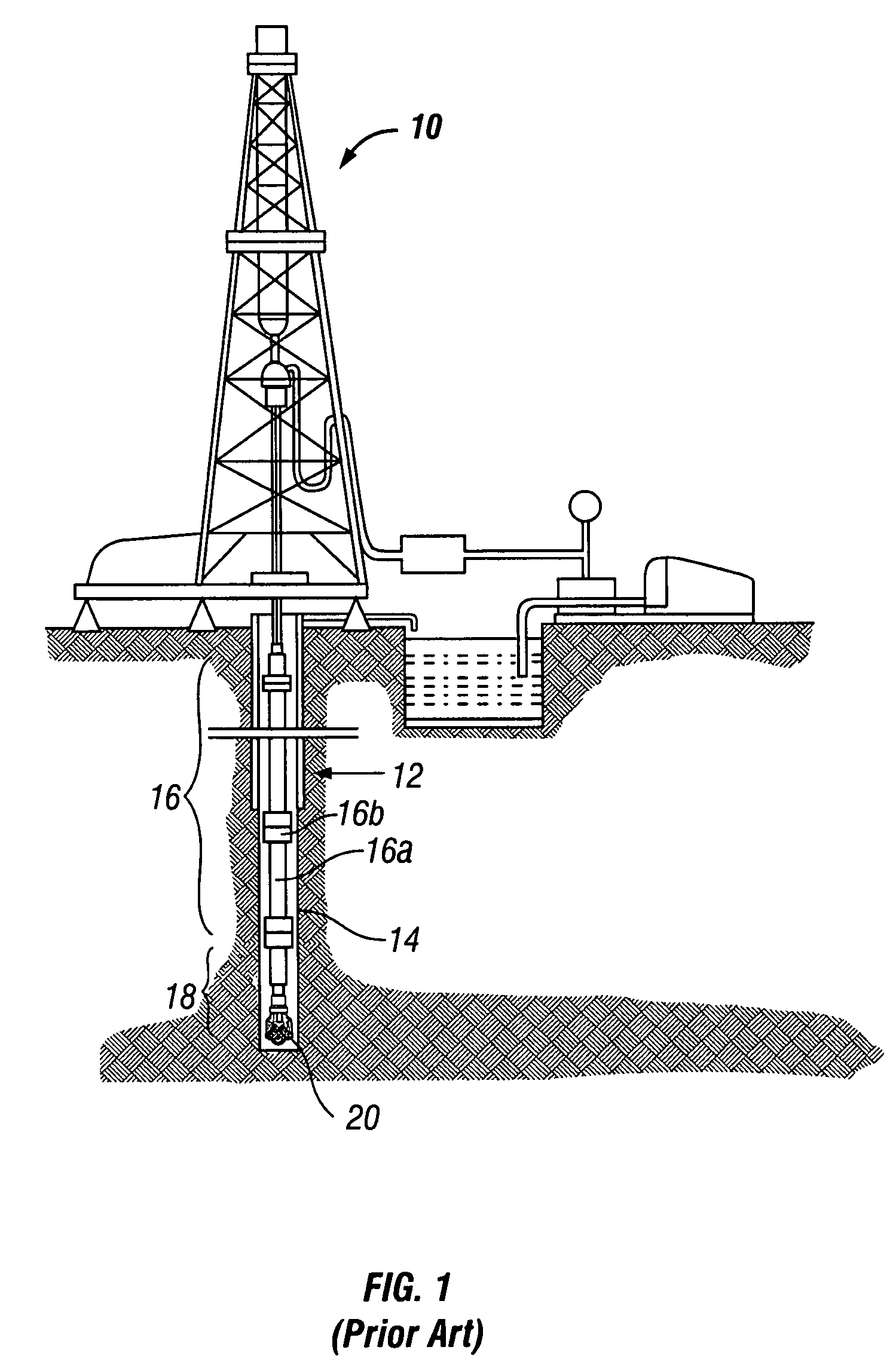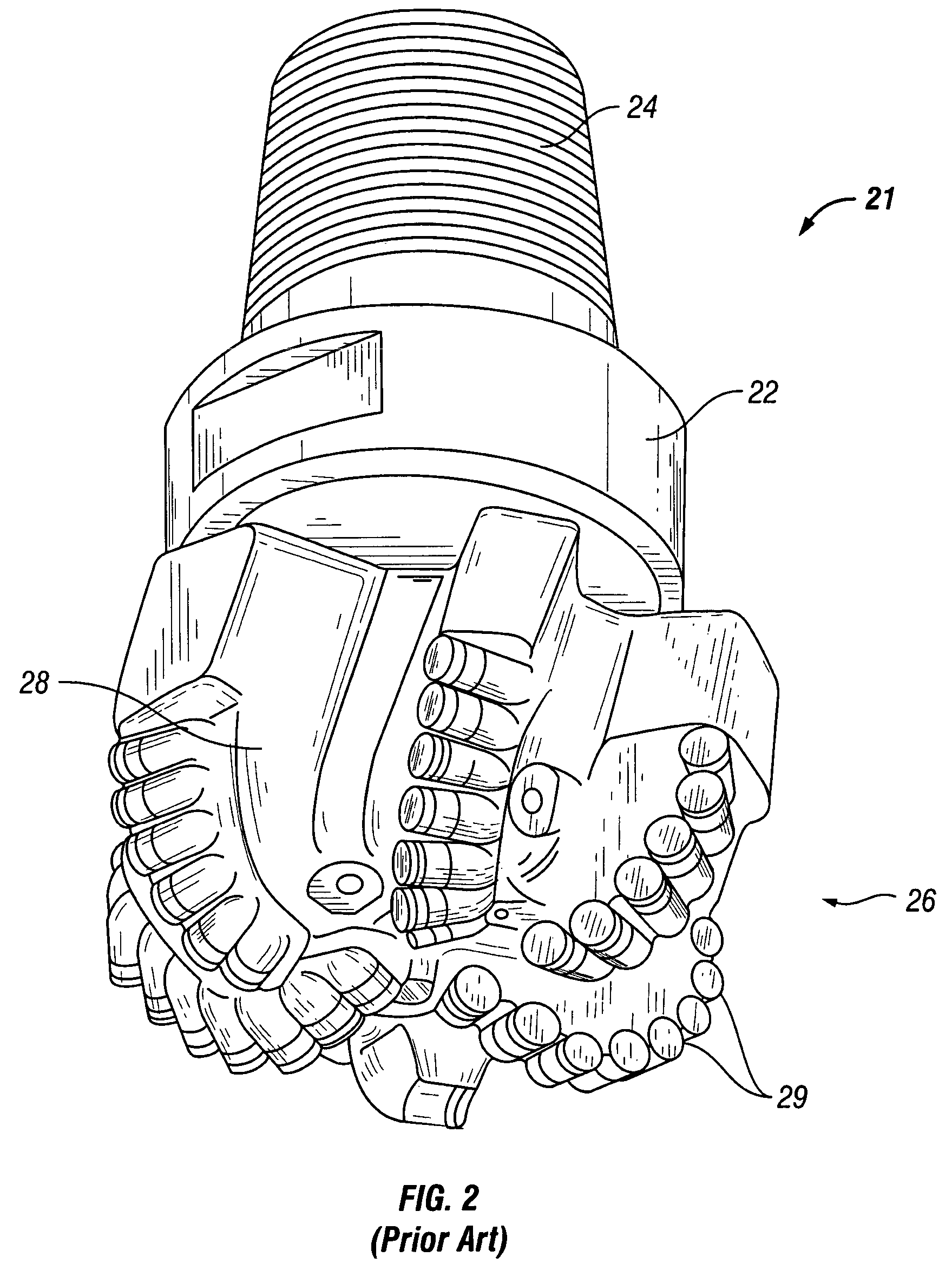Methods for evaluating and improving drilling operations
a drilling operation and drilling tool technology, applied in the field of conventional drilling systems, can solve the problems of affecting the affecting the drilling performance of drilling tool assemblies, so as to and improve the drilling performance parameter
- Summary
- Abstract
- Description
- Claims
- Application Information
AI Technical Summary
Benefits of technology
Problems solved by technology
Method used
Image
Examples
Embodiment Construction
[0045]In one aspect, the present invention provides a method for evaluating drilling information to provide a solution to improve drilling performance. In one embodiment, the method includes obtaining drilling information and evaluating the drilling information to determine the performance of an actual drilling tool assembly in drilling earth formation or to establish the expected performance of a proposed drilling tool assembly in drilling earth formation. The method may further include utilizing the evaluation and / or the determined performance of the drilling tool assembly to define at least one potential solution to improve the drilling performance of the actual or proposed drilling tool assembly. A solution may involve any combination of adjustments to the drilling tool assembly design parameters or the operating parameters used for drilling with the drilling tool assembly.
[0046]In another aspect, the present invention provides a method for improving the drilling performance of ...
PUM
 Login to View More
Login to View More Abstract
Description
Claims
Application Information
 Login to View More
Login to View More - R&D
- Intellectual Property
- Life Sciences
- Materials
- Tech Scout
- Unparalleled Data Quality
- Higher Quality Content
- 60% Fewer Hallucinations
Browse by: Latest US Patents, China's latest patents, Technical Efficacy Thesaurus, Application Domain, Technology Topic, Popular Technical Reports.
© 2025 PatSnap. All rights reserved.Legal|Privacy policy|Modern Slavery Act Transparency Statement|Sitemap|About US| Contact US: help@patsnap.com



